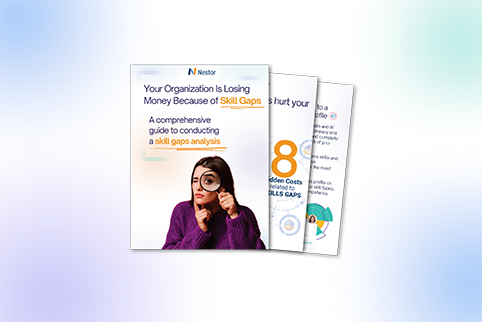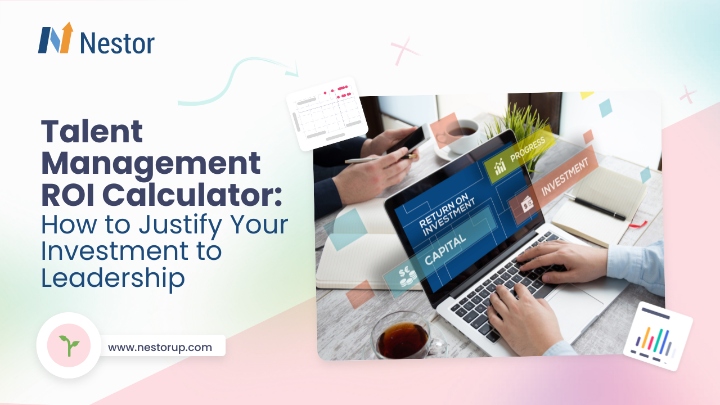Skills Audit in 90 Days: Measure, Prioritize, Mobilize
23 min read

Contents
A Skills Audit is the most direct way to turn “we think” into “we know.”
In plain terms, it’s a structured sweep of your workforce to inventory capabilities, reveal gaps with business impact, and decide what to build, buy, or redeploy, fast. In practice, that means a defendable skills inventory and a clear heat map leaders can act on, not a one-off spreadsheet.
Authoritative guidance frames a skills audit exactly this way: a systematic assessment that maps current skills against what the organization needs next. Established guidance frames a skills audit as a repeatable method that produces a reliable “heat map” of strengths and deficiencies, usable by executives, HR, and L&D alike.
Why it matters now? Skill requirements are shifting faster than planning cycles. The World Economic Forum’s 2025 report estimates that employers expect 39% of key skills to change by 2030, underscoring the need for continuous, evidence-based skills management rather than annual snapshots.
Parallel Gartner research finds leaders are already feeling the strain: 41% say their workforce lacks required skills and 62% cite uncertainty about future skills as a significant risk. A disciplined Skills Audit provides the baseline to act with confidence.
Running the audit on a 90-day cadence is pragmatic and humane. Ninety days is long enough to establish a trustworthy baseline and short enough to avoid “assessment fatigue.”
It creates a drumbeat: collect the right signals (self and manager input, performance and certification evidence, role expectations), synthesize them into a clear skills inventory, and convert findings into targeted upskilling, hiring, or internal mobility, without grinding teams down.
Focus the Skills Audit: Scope, Roles, and Smart Sampling
Set the frame before you touch a survey. The Skills Audit only works if its boundaries are explicit: which business questions you’re answering, which roles and skills you’ll inspect, and whose voices will be in (or out) of the data. Tight scope prevents “audit sprawl,” accelerates delivery, and keeps trust high.
1) Define the decision questions
Anchor the audit to 3–5 decisions leaders must make in the next two quarters. Examples:
- Which capabilities are the constraint on our 2025 plan?
- Where can we redeploy talent faster than we can hire?
- Which skills need targeted upskilling versus external sourcing?
If a question doesn’t change a decision, cut it. Precision is kind to everyone.
2) Choose units of analysis (how fine-grained you go)
- Role families → Roles → Skills. Start with role families (e.g., Data, Sales, Ops), map to specific roles, then list the 8–15 skills per role that materially affect performance.
- Granularity rule: deep on critical roles (revenue, risk, compliance, customer trust), broad elsewhere. Depth where decisions hinge; breadth where pattern-finding matters.
3) Establish a pragmatic skills taxonomy
- Keep it usable: 60–120 skills enterprise-wide is a realistic ceiling for a first pass.
- Mix technical, human, and digital skills; don’t omit behaviors like stakeholder management or problem framing.
- Write anchored definitions (one sentence + examples) so assessors read skills the same way.
4) Pick a proficiency scale once and stick to it
Use a 4- or 5-point scale with behavioral anchors:
- 1 = Awareness (can describe it)
- 2 = Basic (does with guidance)
- 3 = Working (does independently, predictable outcomes)
- 4 = Advanced (adapts method, mentors others)
- 5 = Expert (sets standards, solves novel cases)
Consistency beats cleverness. Changing scales mid-audit corrupts your baseline.
5) Decide census vs. sample
Census (ask everyone) when:
- The population is small (team/function <150),
- The roles are safety-/risk-critical, or
- You’re establishing a first enterprise baseline.
Sample (ask a representative subset) when scale or fatigue is a concern. Practical heuristics:
- Functions ≥300 people: target 15–20%, minimum 150 responses per function.
- Key roles: minimum 25–30 respondents per role per region; oversample critical roles by 1.5×.
- Representation controls: ensure mix by location, tenure, shift pattern, and contract type; cap any single subgroup at ~35–40% of the sample to avoid dominance.
6) Inclusion, exclusions, and edge cases
- Include: employees, long-term contractors in business-critical roles.
- Exclude or separate: interns, very short-term contractors, roles sunsetting within 6–9 months (log them for workforce planning, but don’t slow the audit).
- Edge: new roles with no incumbents – use role requirement profiling rather than self-ratings.
7) Governance & roles (who owns what)
- Executive sponsor: unblocks decisions; signs off on scope.
- Project lead (HR/People Analytics): runs the audit; owns integrity.
- L&D lead: translates gaps into programs.
- BU champions: drive participation; validate role/skill lists.
- Data/privacy partner: approvals, retention windows, consent language.
- Comms: clear, human messaging; manager kits; FAQs.
8) Participation & comms standards
- Keep the core assessment to 10–12 minutes.
- Promise (and deliver) aggregated reporting; publish who sees individual data (if anyone).
- Three touches: launch from the sponsor, manager nudge, last-call reminder.
- Offer manager huddles (15 min) to explain “why this matters” and how results will be used.
9) Risks to pre-empt (and how)
- Inflation bias: anchor with examples; add a manager/peer view for key roles.
- Survey fatigue: short instrument, mobile-friendly, progress bar.
- Ambiguity: publish the skills dictionary; avoid jargon.
- Gaming: communicate that results guide development and mobility.
10) Outputs of the Scope & Sampling phase (2 weeks)
- Audit charter: purpose, scope, decisions, timeline, data policy.
- Skills dictionary v1 with anchors and scale.
- Role–skill mapping for in-scope roles.
- Sampling plan with representation targets and response-rate thresholds.
- RACI + comms pack (emails, slides, FAQs).
- Quality gates: minimum response rates, subgroup coverage checks before you proceed.
Multi-Source Inputs for a Reliable Skills Audit
A Skills Audit only earns trust when the signal comes from more than one place. Triangulation, combining human judgment with system evidence, shrinks bias, boosts reliability, and gives leaders something sturdier than opinions to steer by.
Think multiple lenses on the same capability: how people rate themselves, how work shows up in metrics, and what recent outcomes actually prove.
Start with people, not just systems.
Use a short, anchored self-assessment so employees can describe current proficiency in plain language. Pair it with a manager (and, selectively, peer) view on the same scale. You’re not hunting for “gotchas”; you’re looking for alignment and patterns. Where self and manager diverge, you’ve discovered a coaching moment or a clarity issue in the role.
Let the work speak.
Pull objective traces from your systems of record, LMS completions and recerts, HRIS role history, function data (e.g., code reviews and incident roles in engineering; attainment and renewal metrics in sales; QA or first-pass yield in operations). Add work samples or micro-assessments for two or three must-have skills in critical roles. Keep those short and scenario-based so they reflect the job, not a trivia quiz.
Capture applied experience.
Internal projects, gigs, and stretch assignments reveal transferable capability better than course badges. A portfolio entry with outcomes and stakeholder feedback often says more about real proficiency than a certificate issued two years ago.
Blend it: light math, clear story.
Use a simple, transparent weighting model (e.g., human input + system evidence + recent work samples), adjusted for recency and confidence. Store an evidence ledger behind every proficiency score (“what contributed, when”), so any leader can explain the number in one slide. If data is stale or sparse, the score should say so.
Calibrate, then publish the rules.
Run brief manager huddles to align standards, check for inflation or leniency, and suppress any cuts with very small n to protect privacy. State the purpose (development and workforce planning), who can see what, and how long data is retained. When people understand the safeguards, participation and honesty go up.
In short: a multi-source approach turns your Skills Audit from a survey into a living, evidence-backed profile of capability, fair to employees, credible to executives, and practical for L&D and internal mobility.
Your Skills Baseline and Executive View
A Skills Audit lives or dies on signal quality. You want triangulated evidence, human input plus system data, so leaders can trust the baseline and employees feel the process is fair.
Guiding principles
Minimize friction: shortest possible instrument; reuse data you already have.
Triangulate: combine self/manager input with objective traces (projects, credentials, performance).
Make it comparable: consistent definitions and a single proficiency scale across roles.
Bias-aware: design for inflation/leniency and correct for it (calibration beats blind trust).
Privacy-first: clear purpose, limited access, aggregated reporting, and retention rules.
The sources that matter (and how to use them)
Self-assessment (quick, anchored): 8–15 skills per role, rated on a 4–5 level scale with behavioral examples. Add a confidence slider (“How confident are you in this rating?”) to flag shaky inputs. Keep it to 10–12 minutes; mobile-friendly.
Manager (and selective peer) assessment: Use the same scale and definitions for comparability. Collect for critical roles or when a self-rating triggers a large gap. Run calibration huddles (30–45 min per team) to align standards and dampen leniency.
System-of-record evidence (objective traces)
- HRIS/LMS: completed courses, recert dates, assessment scores.
- ATS/internal mobility: prior roles, projects, portfolios.
Functional systems:
- Engineering: code contributions, reviews, incident roles.
- Sales/Success: quota attainment, pipeline mix, CSAT/renewals.
- Ops/Service: QA audits, first-pass yield, on-time metrics.
Credentials: verified certifications or licenses with expiry.
Work samples & practical tests (targeted, lightweight): Short scenario-based items or micro-sims for 2–3 must-have skills per critical role. Time-box to 15–20 minutes to avoid fatigue.
Projects, gigs, and stretch assignments: Pull participation and outcomes from your talent marketplace/PM tools. These data show applied proficiency better than course completions.
Make the data interoperable (taxonomy & normalisation)
One skills dictionary (plain-language names + 1–2 line definitions + examples).
Synonym control: map “SQL,” “SQL querying,” and “Data extraction (SQL)” to one concept.
Grain rule: keep skills actionable (e.g., “Data modeling” > “Analytics”).
ID resolution: ensure each person has a stable identifier across HRIS/LMS/CRM/Eng tools.
Timebox relevance: prefer evidence from the last 12–18 months; tag older data as low-weight.
Instrument design tips (so ratings mean the same thing)
Anchors over adjectives: “Can design a data model for a new feature with <2 iterations of rework” beats “Advanced.”
Behavior + context: specify scale anchors with scope (own tasks / team / cross-functional).
Recency prompt: “Rate based on the last 6 months of work.”
“Not applicable” path: don’t force ratings where a skill isn’t used.
Bias controls you can actually implement
Inflation check: if self > manager by ≥2 levels on ≥3 skills, trigger a brief review.
Leniency check: compare each manager’s average vs. group mean; auto-flag outliers.
Small-n privacy: suppress any cut with n < 7 to prevent identification.
Free-text guardrails: steer comments with prompts (“Example outcome?”) to reduce vague praise.
Data governance (trust is the moat)
Purpose statement: development and workforce planning—not punitive grading.
Access: role-based (project team and relevant leaders); no broad browsing rights.
Retention: define a window (e.g., 18 months) and re-collect at the next cadence.
Employee transparency: who sees what, when aggregated results land, and how they’ll be used.
Execution timeline (Weeks 1–4 of the 90)
Week 1: finalize skills dictionary; integrate data sources; build the short survey(s).
Week 2: launch self-assessment; manager calibration briefings.
Week 3: manager/peer input; ingest HRIS/LMS/functional data; begin normalization.
Week 4: close collection; run bias checks; produce the clean, joined dataset and data dictionary.
Tangible outputs from this phase
Joined person–role–skill table with per-skill proficiency and confidence.
Evidence ledger (what contributed to each score, with timestamps).
Response & coverage report (by function/region/role).
Data dictionary & governance note (definitions, scale, weights, retention).
Prioritize What Matters: Ranking Skills Gaps by Business Risk
Not every gap is worth chasing. After the Skills Audit baseline, triage with one question: Which capability shortfalls, if unresolved, will most constrain revenue, risk, or customer trust in the next two quarters? That framing keeps the exercise strategic, not academic.
How to rank without drowning in math. Start with five lenses and keep them visible on the dashboard: business impact (revenue/risk/compliance), gap magnitude (required minus current proficiency), time sensitivity (deadlines, regulatory or launch windows), feasibility to close (build, buy, or borrow), and confidence in the data.
If you need a single number, use a simple score, then nudge up if the skill is safety- or regulation-critical, and down if confidence is weak or effort is disproportionate.
Translate scores into action buckets.
- Must-move: high impact, deep gap, near-term risk. These get immediate interventions and executive air cover.
- Plan-and-sequence: important but not bottlenecked by time; design programs and hiring plans now.
- Monitor: watch trends; intervene only if trajectory worsens.
Choose the right lever per gap. If the lead time to competence is short and the skill is adjacent to current work, build (targeted upskilling, mentoring, micro-sims). And if you need capacity yesterday or the skill is rare, buy (hire or contract).
If the capability exists elsewhere internally, borrow: redeploy via internal gigs or short-term assignments. State the lever with a rationale so stakeholders see the logic, not just the label.
Make prioritization a ritual, not a meeting. A 30-minute weekly huddle (BU lead, People Analytics, L&D) is enough: review the top risks, confirm owners, and check whether interventions are moving the needle. Decisions should fit on one page: the gap, the lever, the owner, the metric that defines “closed,” and the target date.
Output, not output theater. You’re aiming for a short list, typically 5–10 enterprise gaps, with named owners and budget alignment. Everything else can wait. The warmth here is intentional: people are behind these numbers. Prioritize with clarity, communicate with empathy, and show progress quickly so trust compounds.
A 30/60/90 Skills Action Plan
Instead of the old “Scope → Data → Dashboard → Gaps → Plan → Hand-off,” we’ll use a tighter, outcome-first arc that reads like a story and still performs for SEO:
The 4-D Flow
Diagnose → Decide → Deliver → Sustain.
Clean, executive-friendly, and human. No section lists in the intro; just forward motion.
Diagnose (Weeks 1–4)
This is where the Skills Audit earns credibility. Keep it simple, defensible, and kind to people’s time.
Start by clarifying the decisions this Skills Audit must unlock in the next two quarters. That constraint determines everything else, who you assess, which roles matter most, and how deep you go.
Build a usable skills dictionary with plain-English names and short anchors so ratings mean the same thing across teams. Pick one proficiency scale and stick to it; changing scales midstream corrupts your baseline.
Collect evidence from three lenses and blend it transparently. First, people evidence: short self-ratings on the few skills that truly move performance, paired with a manager view on the same anchors. Second, system evidence: recent certifications, learning outcomes, role history, and functional metrics that reflect how work actually shows up. Third, applied evidence: small work samples or micro-sims for two or three must-have skills in critical roles.
Triangulate these signals rather than letting any one of them dominate, and publish how you weight them. If data is stale or confidence is low, say so on the record. Close the month with a baseline you can show on a single page: where you’re strong, where you’re thin, and what looks risky if left alone.
Decide (Weeks 5–6): choose the few moves that matter
This is the hinge between analysis and action. The Skills Audit has given you a defensible picture; now you convert it into a small set of high-leverage decisions leaders can stand behind.
Start by framing each candidate gap as a business constraint, not a data anomaly. Ask: If this capability stays weak for the next two quarters, what breaks—revenue, risk/compliance, customer trust, or delivery speed? That question keeps you out of academic ranking and in the realm of operating choices.
Prioritize with five lenses, kept deliberately simple: business impact (how much value or risk rides on the skill), gap depth (required minus current proficiency), urgency (time sensitivity—launches, audits, renewals), feasibility to close (can we build, borrow, or buy in time), and confidence in the data (recency, coverage, alignment between self/manager/system evidence).
If you need a single number, use an explainable score: Priority = Impact × Gap × Urgency, then adjust up for safety- or regulation-critical skills and down if data confidence is weak or feasibility is poor. The point isn’t mathematical purity; it’s transparent, repeatable trade-offs you can defend in a boardroom and a team huddle alike.
Pick a primary lever for each top gap and state the rationale in one sentence. Build when the skill is adjacent to current work and can be raised in weeks through targeted practice. Borrow when the capability exists internally and redeployment or a short gig can cover demand faster than hiring.
Buy when lead time or rarity makes internal supply unrealistic. Keep all three levers aligned to the same skills taxonomy the audit used, names, levels, examples, so L&D, mobility, and hiring stay synchronized.
Define “done” before you start.
For every chosen gap, declare a measurable finish line (readiness on must-have skills, verified work samples, risk exposure reduced) and a realistic date. Use the same anchors and evidence blend from the Skills Audit so improvements are comparable to the baseline. If the data is stale or thin, say so up front and plan a fast refresh rather than pretending certainty you don’t have.
Make the call and make it visible. In Week 5, convene a short, decision-only session with the sponsor, BU leads, L&D, Talent/Mobility, and People Analytics. Walk the top gaps in priority order, select the lever, name a single accountable owner, agree the Definition of Done, and unblock capacity.
In Week 6, publish a clear, human update: what you’re tackling first, why it matters now, what changes for managers and employees, and when you’ll report progress. Keep the tone warm and candid; people engage when they see the why and the finish line.
By the end of Week 6 you should have a trimmed list, typically five to ten enterprise gaps, with owners, resources, and dates attached. Everything else goes to a watchlist. That constraint is kindness: it protects focus, accelerates visible wins, and sets up the next phase to deliver at speed.
Deliver (Weeks 7–12): turn the Skills Audit into visible wins
This is the execution sprint. The Skills Audit has clarified where capability is constraining outcomes; now you move quickly, prove movement with evidence, and keep people experience humane.
Start by locking scope. Reconfirm the five to ten gaps you chose in the Decide phase, the owners, and the exact “definition of done” attached to each. Publish a short note that explains what changes for managers and employees this month. The tone matters: high standards, zero theatrics.
Work each gap through one primary lever and keep the logic public.
Build means targeted upskilling, not content bloat.
Design short, skills-first sprints that mirror real work: scenario practice, coached feedback, and micro-assessments that verify the skill in context. Entry criteria are explicit; exit criteria map to the same proficiency anchors used in the audit. Managers get a simple playcard: what to coach this week, what “good” looks like, how to log the evidence.
Borrow is rapid internal mobility.
Treat internal gigs and short redeployments as first-class interventions, not a last resort. Scope work in weeks, not quarters; agree capacity and backfill before launch; and write outcomes back to the skills profile so applied experience shows up in readiness. When the capability already exists somewhere in the organisation, redeployment beats a requisition every time.
Buy is focused acquisition.
When lead time or rarity makes internal supply unrealistic, move to hiring or specialist contracts—but keep requisitions pinned to the same skills taxonomy and proficiency levels. Contracts include a knowledge-transfer clause so capability remains after the engagement ends.
Keep a strict rhythm. A weekly thirty-minute huddle is enough: look at live readiness, gap depth, and confidence; decide one or two moves; clear blockers; close the loop on last week’s commitments. If an intervention is not moving the metric it was designed to move, cut it or fix it. Progress updates stay short and human: what changed, who made it happen, what’s next.
Prove movement with the same math you used to diagnose. For each priority role, refresh proficiency and readiness using the blended evidence model (human input, system traces, applied work). Stamp every change with recency so leaders know what is fresh and what is inherited.
Where data is thin, say so; confidence is part of the score. Wins are specific: “Readiness on data modeling in Analytics, EMEA moved from 46% to 68% in six weeks; micro-sims passed at seventy-two percent; two internal gigs closed backlog on Project X.”
Protect trust while you push.
Keep forms short, definitions plain, and privacy rules visible. Make it easy for individuals to see their own skills profile and the one action that will matter most this month, start a sprint, join a gig, or pair with a coach. Recognise early movers in public; people copy what gets celebrated.
By the end of Week 12, you should have fewer red items in the risk quadrant, a measurable rise in readiness on must-have skills for priority roles, and a larger share of needs met through redeployment rather than net-new spend. More importantly, you’ll have established a cadence that people can live with: fast decisions, honest data, and interventions that look like the job, not a seminar.
Sustain: make the Skills Audit a habit
The sixth gear is continuity. Your Skills Audit becomes useful when it stops being an event and starts behaving like an operating system: predictable cadence, clear ownership, light governance, and a steady pulse of decisions that people can feel in their week.
Cadence that people can live with.
Keep a weekly, 30-minute skills huddle to review movement on readiness and the few gaps that actually constrain revenue, risk, or customer trust. Hold a short monthly retrospective to retire what isn’t working and scale what is. Refresh the baseline on a fixed rhythm—weekly data ingests from systems of record, a visible “last updated” timestamp, and a quarterly reconfirmation of role requirements so the target doesn’t drift.
Single language, zero drift.
Guard the skills dictionary like production code. Names, levels, and anchored examples should change only through a versioned request: business rationale, proposed wording, and impact on in-flight programs and mobility. If the work changes, update the taxonomy; don’t let every team invent its own synonyms. This one discipline keeps L&D, internal gigs, and hiring perfectly synchronized.
Evidence, not ceremony.
The same blended model that powered the audit should power improvement: human input, system traces, and applied work. Show recency and confidence on every score, and keep an “evidence ledger” behind the scenes so any leader can explain where a number came from in one slide. When data is thin or stale, say so in plain language; trust rises when uncertainty is explicit.
L&D and internal gigs as co-equal levers.
Training without application doesn’t close gaps; application without support burns people out. Keep targeted sprints short, scenario-based, and tied to the exact skill deltas you identified. In parallel, route real work through internal gigs or short redeployments where the capability already exists. Write outcomes back to the profile so applied learning shows up as readiness, not just badges.
Governance that earns consent.
Publish a simple purpose statement: development and workforce planning, not punitive grading. Limit access by role, suppress tiny cuts to protect privacy, and set a clear retention window so old data doesn’t masquerade as signal. Keep a lightweight change log for formulas, scales, and role requirements. When the rules are transparent, participation and honesty stay high.
Manager and employee experience first.
Every individual should see a current skills profile, the one or two skills that matter most for their role right now, and a clear next action, join a sprint, take a gig, or book a coaching session. Managers get concise prompts on what “good” looks like this week and how to recognise it in actual work. Celebrate specific wins in public: the team that moved a red gap to amber, the gig that unblocked a launch, the learner who verified a hard skill on a real project.
Budget and ROI without theatre.
Tie funding to prioritized skills, not generic categories. Track a small set of outcomes wherever possible: readiness on must-have skills in priority roles, exposure to critical gaps, share of needs met via redeployment, and time-to-close for targeted interventions. When something moves the needle, do more of it; when it doesn’t, stop. That is the entire governance philosophy.
Reset without restarting.
At the end of each quarter, publish a human-readable “what changed” note: which gaps closed, which persist, what you’re chasing next, and why. Roll forward the cadence, keep the math stable unless you can clearly improve it, and protect the tone—direct, warm, and fair.
Sustaining isn’t about more meetings or bigger dashboards. It’s about keeping the Skills Audit small, true, and close to the work so capability grows where it actually matters—and people feel the system helping them, not grading them.
Final Thoughts on Skills Audit
A 90-day Skills Audit is an operating rhythm. Diagnose what’s real, decide the few moves that matter, deliver visible wins, and sustain the cadence so capability keeps pace with the work. Keep the math transparent, the language humane, and the taxonomy stable; trust will follow, and so will results. If you keep it this simple, and this disciplined, you’ll turn skills from guesswork into a competitive advantage.
Frequently Asked Questions About Skills Audit
What is a Skills Audit?
A Skills Audit is a structured assessment of what capabilities your people have today versus what the business needs next. It produces a defendable skills inventory and a clear view of gaps so you can decide to build, borrow (redeploy), or buy talent.
Why do it in 90 days instead of annually?
Ninety days is long enough to gather multi-source evidence and show movement, but short enough to avoid assessment fatigue and stale data. It creates a repeatable operating rhythm rather than a once-a-year spreadsheet.
Who should own the Skills Audit?
A business sponsor sets direction; People Analytics runs the method; L&D and Talent Mobility convert gaps into programs and gigs; managers coach locally. One owner per priority gap—no shared accountability.
How do you keep ratings fair and reliable?
Triangulate: short anchored self-ratings, manager input on the same scale, system evidence (certs, outcomes), and lightweight work samples. Calibrate managers, show recency/confidence on scores, and be explicit about how you weight inputs.
Which tools do we need?
Whatever you already have: HRIS + LMS + your work systems (e.g., CRM, engineering, ops) and a dashboard layer. Avoid new platforms unless integration is trivial; the value is in the taxonomy, cadence, and evidence blend.
How do we protect privacy and trust?
Publish a clear purpose (development and workforce planning, not punishment), restrict access by role, suppress tiny cuts where people could be identified, and set a retention window. Tell people who sees what and when.
Skills audit vs. competency framework, what’s the difference?
A competency framework describes expectations. A Skills Audit measures reality against those expectations and shows where to act first. They’re complementary; the audit keeps the framework honest.
How do we prove ROI?
Track a small set of outcomes tied to the baseline: readiness on must-have skills in priority roles, exposure to critical gaps, share of needs met via redeployment, and time-to-close per intervention. If an action doesn’t move one of these, stop doing it.










